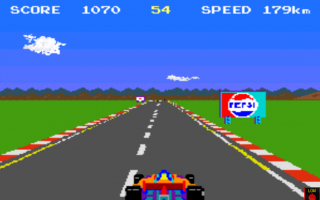With the global successes of modern video game racing franchises Gran Turismo, Mario Kart, and Need for Speed, it is easy to forget that over the past 30 plus years, racing games have had a long, diverse history. Some of the earliest electronic games were racing games: starting with handheld electronic games such as the 1977 Mattel Auto Race, to arcade games like Reiner Foerst's Nürburgring (~1975-6 ) and Tele-Games' Night Driver (1976), and continuing through classics like Pole Position (1982) and Vette! (1989), car games have been a place of experimentation with the concepts of realism, perspective, and the translation of 3D experiences into a 2D realm. As such, the history of electronic racing games is a fascinating and importance lens with which to view the development of contemporary computing technology.

Grand Prix Circuit (Accolade, PC version, 1988)
Drawing from Stanford University Library's Stephen M. Cabrinety Collection, a collection of over 19,000 historic video games, consoles, and related paraphernalia, this project is aimed at finding and archiving the ways that video games have represented the driver in the space in a car, and how these games have translated the full-sensory experience of driving in the real world into a 2-dimensional digital game console.

Pole Position (Atari, 1982)
Using screen capture software and the Cabrinety Collection's library of functioning historic game consoles, the Revs Program at Stanford is preserving historic digital driving experiences and is cataloguing the innovations across platforms that have led to the availability of high-fidelity, commercially-available driving simulators such as Gran Turismo. This information will be made publicly available via the Stanford Library and the Internet Archive, and will be displayed on an interactive web page that will serve as a digital family tree, allowing users to navigate and explore the history of cars in video games.
End
